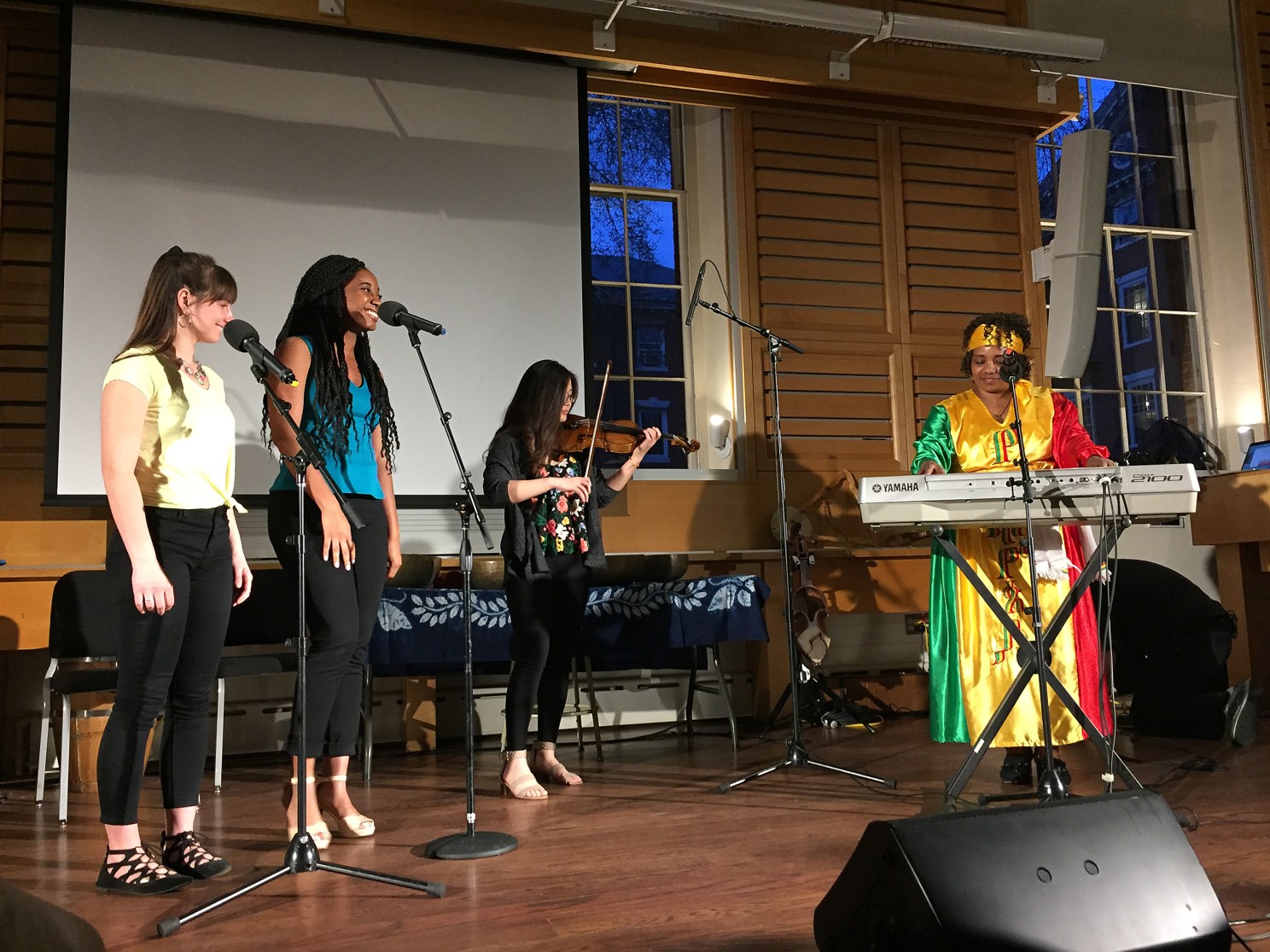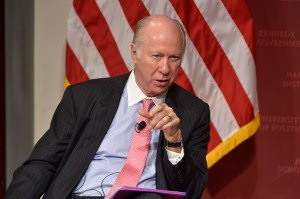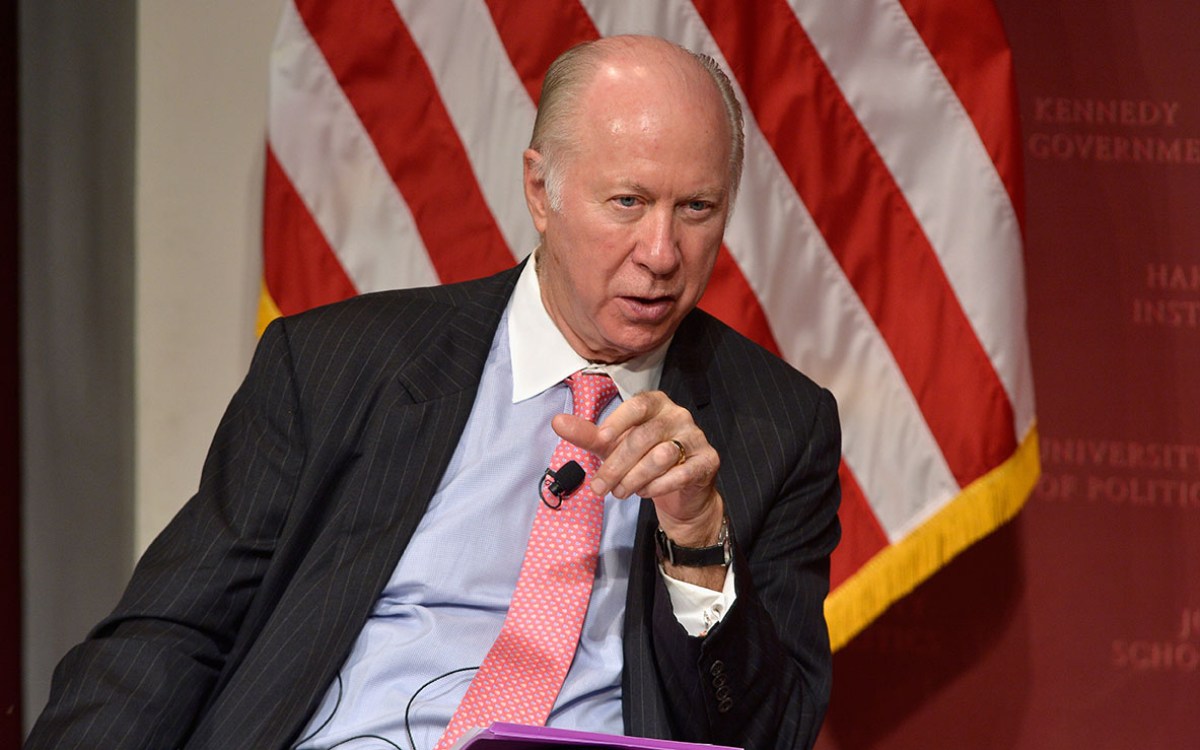Social engagement through music connects students with local musicians of color

Students performing with Bethlehem Melaku./Courtesy of Harvard University Department of Music
“Social Engagement Through Music: Histories, Economies, Communities” is a new, team-based, immersive course in which students collaborate with and provide professional support to musicians from Boston’s immigrant communities. The course also provides an intellectual framework for understanding the historical circumstances, economic and political realities, and community needs of these artists.
The course is the first of its kind, a collaboration with the Massachusetts Cultural Council (MCC). Maggie Holzberg, MCC folklorist, helped recommend the artists through MCC’s 2018 Traditional Arts Apprenticeship Program. The course also collaborated with the Bok Center Learning Lab, the Mindich Program in Engaged Scholarship, the Music Department’s faculty — Carol Oja, Kay Kaufman Shelemay, and Michael Uy — graduate students Matthew Leslie Santana and Caitlin Schmid, and the four brilliant musicians from around the world who have made Boston their home.
Fourteen Harvard undergraduates spent the spring semester working with artists Bethlehem Melaku, Sixto Ayala, Lin Zhantao, and Shyam Nepali. Each artist was assigned a team of three or four students and a faculty advisor.
Student teams executed ethnographic interviews, assessed the needs of the artist, and collaborated with them to come up with concrete methods of support. One team created business cards, another helped teach their artist how to build a kickstarter page, others searched out performing and teaching venues, drafted letters, and helped write grants. All the teams produced materials that their artists can use for promotion in the future.
“At our last class, some students commented on how close they got to the musician,” said Uy. “They’re struggling with what to do next; they want to do more. One, for example, will be exchanging English lessons for lessons on the erhu.”
“The students were amazing,” Santana said. “I was surprised at how happy they were to do extra work. We asked a lot of them, but they were willing to do more; they wanted to help. And although we can’t fix the bigger issue of ‘this course ends,’ these students did the best they could to find ways to support their artist long-term. They were immediately thinking of sustainability.”
Websites, for example, were built on free platforms, and where there was a language or technology issue, social media access was given to the artist’s adult children so that updates would be easier.
The technical pieces of the course — video and photo shoots — were bolstered by the Bok Center Learning Lab and coordinated by Schmid. “Students learned to record and edit video of their artist teaching, shoot and produce good head shots, and conduct ethnographic interviews, all skills that are useful going forward,” she says.
“I would say that our students may have benefited more from this collaboration than the musicians,” said Uy. “This was a great cohort. They put their hearts and souls into this class and they wanted to do more, learn more, engage more, which speaks to their level of commitment.”




